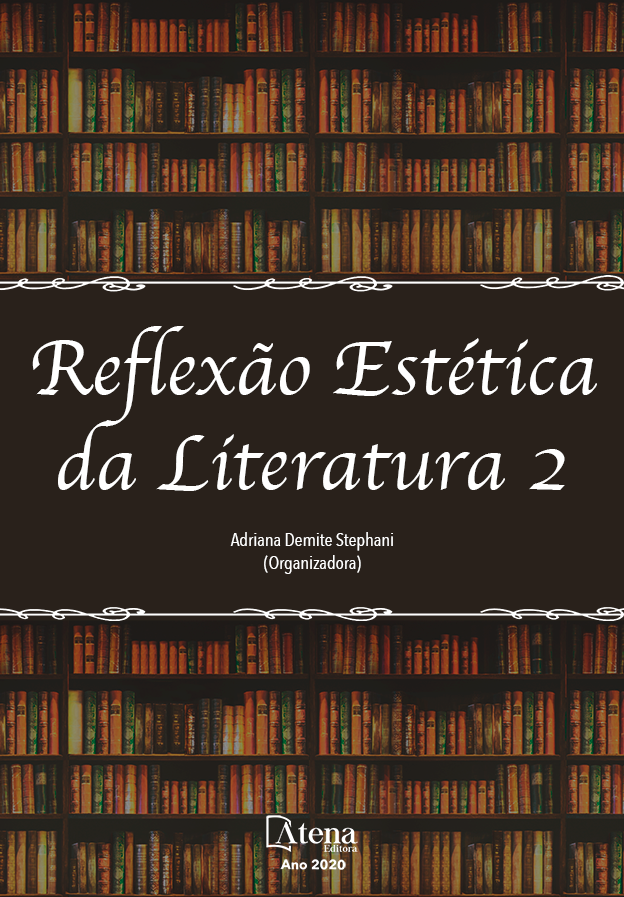
Simon vs Simon: intertextualidade e adaptação
Discussão das diferenças entre o tratamento da homossexualidade no romance Simon vs. a agenda Homo Sapiens e em sua adaptação cinematográfica, intitulada Com amor, Simon. Para tanto, apresentam-se questões como a natureza do romance adolescente, a adaptação de um livro para as telas do cinema e o tratamento do tema da homossexualidade. Objetiva-se, a partir do conceito de dialogismo de Bakhtin e da definição de intertextualidade de Genette, analisar a adaptação da obra de Albertalli em termos de prática intertextual. Apresenta-se ao leitor a questão de literatura e cinema através do tempo, e como essas artes se mesclam e se afastam. A busca de fidelidade por parte da cinematografia em relação aos textos de origem já não é considerada um critério válido no que se refere às análises críticas. A metodologia de pesquisa escolhida foi a revisão teórica e a finalização da análise proposta nos permite observar que as adaptações cinematográficas de obras literárias ganharam autonomia ao longo do tempo. Hoje já não se admite a hierarquização entre romance e filme. O romance de Albertalli é uma ficção adolescente que apresenta dilemas realistas com uma narrativa leve e fluida. As alterações em passagens importantes do romance nos possibilitam questionar as razões pelas quais a indústria cinematográfica se interessa por textos como o analisado neste artigo. A julgar pelo sucesso do texto original, infere-se que tais interesses estejam relacionados a questões financeiras. Apostar em produções inéditas é sempre incerto, conforme Horkheimenr e Adorno (1978). Sobre a questão da “fidelidade”, Linda Hutcheon (2011) afirmou “A adaptação é repetição, porém repetição sem replicação”. Os estudos passaram a desconsiderar a exigência da fidelidade para como o texto adaptado, haja vista não ser possível o produto da adaptação alcançar os mesmos objetivos que a obra adaptada, por se tratar de duas mídias distintas, ainda que relacionadas.
Simon vs Simon: intertextualidade e adaptação
-
DOI: 10.22533/at.ed.89420261023
-
Palavras-chave: Simon vs. a agenda Homo Sapiens. Com amor, Simon. Adaptação. Romance adolescente. Homossexualidade.
-
Keywords: Simon vs. the Homo Sapiens agenda. Love, Simon. Adaptation. Teen novel. Homosexuality.
-
Abstract:
A discussion on the differences between the treatment of homosexuality in the novel Simon vs. the Homo Sapiens agenda and in its cinematographic adaptation, entitled Love, Simon. For that purpose, we present issues such as the nature of teen novel, the adaptation of a book to projection screen and the treatment of the theme of homosexuality. The aim, starting from the concept of dialogism in Bakhtin and the definition of intertextuality in Genette, is to analyse the adaptation of Albertalli’s piece of work in terms of intertextual practice. We introduce to the reader the issue of literature and cinema through time, and how those arts mingle and move away from each other. The search for cinematographic fidelity to the original texts is no longer considered a legitimate criterion referring critical anaylises. The chosen research methodology was theoretical revision and the finalization of the proposed analysis allow us to claim that cinematographic adaptations of literary works have gained authonomy over time. Today it is no longer admissible to do a hierarchization between a novel and a film. Albertalli’s novel is a teen fiction which presents realistic dilemmas with a light and fluid narration. The alterations in important passages of the novel allow us to question the reasons why cinematographic industry gets interested in texts such as the one analysed in this paper. Judging by the original text’s success, we assume such interest being related to financial matters. Making a bet on unheard-of productions is always contingent, according to Horkheimenr and Adorno (1978). On the issue of fidelity, Linda Hutcheon (2011) claimed “Adaptation is repetition, but repetition without replication”. Studies started to disregard the demanding of fidelity to the adapted text, considering that it is not possible for the product of an adaptation to reach the same goals than the adapted work, since we are dealing with two distinct, yet related, medias.
-
Número de páginas: 13
- Igor Sampaio
- Denise Veras


